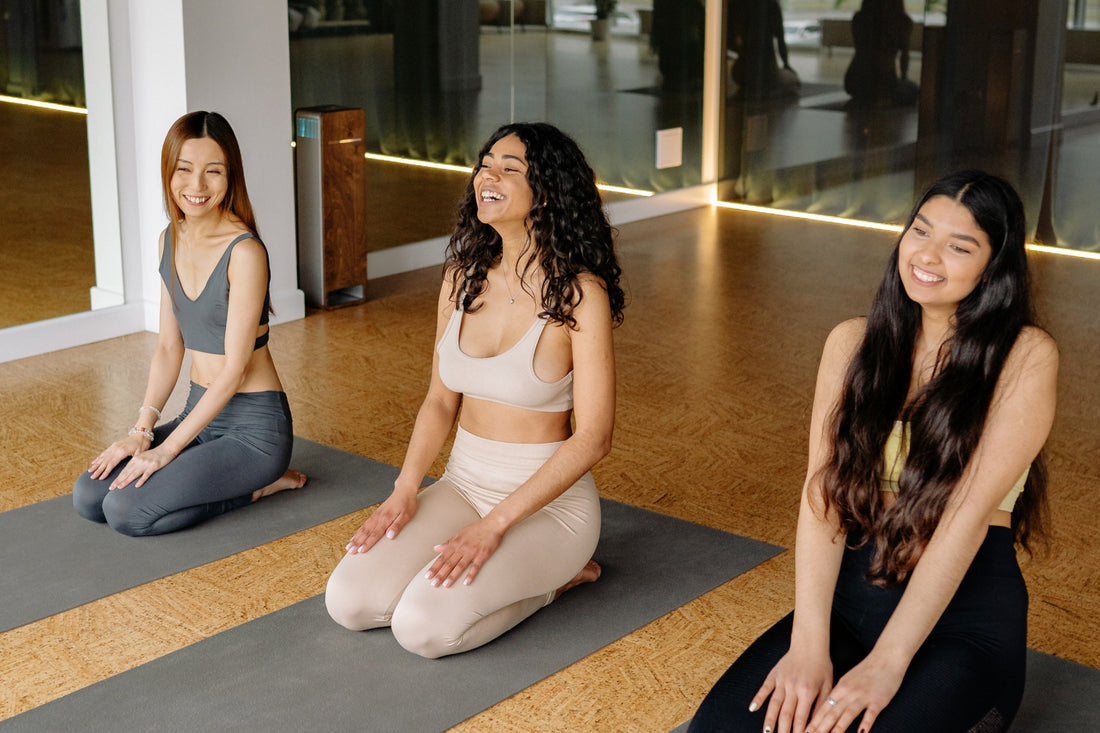¿Trabaja en una oficina? Para muchos, la semana laboral tradicional de lunes a viernes, de 9 a 17 horas, es una realidad que los obliga a sentarse en una silla mirando la pantalla de una computadora durante períodos incómodos. Este "bajón de oficina" puede provocar dolor de espalda, molestias y un hábito de mala postura.
Practicar una buena postura en el lugar de trabajo le ayudará a mantener sus articulaciones correctamente alineadas, disminuir la tensión en los ligamentos, prevenir la fatiga y la tensión muscular e incluso disminuir el riesgo de desarrollar artritis.
Una buena postura no solo ayuda a la vista, sino que también es buena para la vista. Las personas con una buena postura se ven más seguras, más fuertes y más felices. A continuación, se ofrecen algunos consejos sencillos para cuidar la espalda, la postura y la salud general en la oficina.
Postura correcta en el escritorio

Como habrás adivinado, uno de los principales factores que contribuyen al dolor de espalda en la oficina es la mala postura al sentarse en el escritorio. Conoces la postura correcta, pero a menudo es más fácil decirlo que hacerlo. A continuación, te presentamos algunos métodos beneficiosos que puedes implementar y recordar la postura que debes tener:
1. Respirar desde el vientre
Puede que reconozcas esta postura de tu instructor de yoga, pero recuerda respirar siempre desde el abdomen. Llevar el ombligo hacia la columna vertebral fortalece los músculos de la parte superior del cuerpo y activa el centro del cuerpo.
2. Mantenga el ratón cerca
Evite estirarse y forzar la muñeca y los hombros. Intente colocar el ratón directamente al lado del teclado y a una distancia accesible de su brazo.
3. Alinea tu cabeza
Aunque a veces puede resultar difícil ver lo que hay en la computadora que tienes frente a ti, es importante mantener la cabeza erguida y alineada con el cuello por encima de los hombros. Esto ayuda a evitar la tensión en el cuello y a mantener una postura adecuada.
4. Planta tus pies
Mantenga ambos pies apoyados en el suelo mientras está sentado para evitar la tensión en las rodillas y los tobillos. Para una mejor posición, asegúrese de que los pies estén separados a la altura de los hombros y las rodillas en un ángulo de 90 grados.
5. Tómate un descanso
Tomarse un momento para estirarse o caminar un poco es esencial no solo para la espalda, sino también para la salud mental. Intente estirarse cada 20 o 30 minutos y levantarse completamente cada hora. Esto ayudará a mejorar la circulación en el cuerpo y reducirá cualquier tensión o presión que pueda sentir mientras está sentado.
6. Utilice auriculares
Intentar sostener el teléfono con el hombro mientras se escribe un correo electrónico puede parecer eficiente, pero en realidad puede provocar un dolor extremo en el cuello. En lugar de eso, utilice un auricular o un altavoz para evitar ese dolor terrible.
7. Descruza las piernas
Algunas personas piensan que sentarse con las piernas cruzadas es más cómodo, pero es perjudicial para la columna vertebral. Cuando se cruzan las piernas, es difícil mantener los hombros rectos y la columna recta. La torsión excesiva puede tensar la espalda y la pelvis, y pone en riesgo la aparición de varices al interrumpir el flujo sanguíneo.
Tómate un descanso para hacer ejercicio

Además de una postura correcta, una caminata rápida y estiramientos básicos durante los descansos, intente incorporar algunos de estos ejercicios de escritorio para poner en movimiento los músculos y acelerar el corazón.
Fondos de tríceps
Párese frente a su escritorio, con la espalda mirando hacia la computadora y coloque ambas manos sobre el escritorio a su lado. Coloque los pies juntos en el suelo y doble los brazos para inclinarse hacia abajo y luego volver a levantarse. Complete 3 series de 10 flexiones de tríceps.
Estiramiento de hombros
Sentado en una silla, levante una mano hacia el techo detrás de la espalda y baje la otra hacia el suelo, de manera que ambas manos se junten. Mantenga el estiramiento durante 30 segundos y repita el ejercicio con cada brazo.
Trabajo central
Sentado en la silla, coloque las manos detrás de la cabeza y lleve un codo hacia la rodilla opuesta, girando también el cuerpo . Luego, junte también el otro codo y la otra rodilla. Intente hacer 15 giros por lado.
Elevaciones de piernas
Sentado en la silla, agarre cada lado de la misma con las manos y estire una pierna. Una vez estirada, levante la pierna ligeramente 2,5 cm y luego bájela 2,5 cm. Haga este ejercicio con cada pierna y levántela entre 15 y 20 veces.
Sentadillas en la pared
Busque un espacio abierto en la pared de la oficina. Deslícese hacia abajo contra la pared hasta que sus rodillas formen un ángulo de 90 grados. Permanezca en esta posición durante 30 a 45 segundos y luego suéltela. Realice la sentadilla contra la pared de 1 a 3 veces. Para un desafío adicional, alterne levantando un talón y luego el otro talón hasta que se alcance el tiempo.
Conclusión
Como puede ver, hay muchas formas diferentes de incorporar y practicar una buena postura en la oficina. Utilice estos consejos diarios para mantener una postura adecuada para la espalda, el cuello y otros músculos mientras desarrolla fuerza y estimula el flujo sanguíneo. Pasa mucho tiempo en la oficina, asegúrese de que sea un entorno productivo no solo para su trabajo sino también para su cuerpo.






